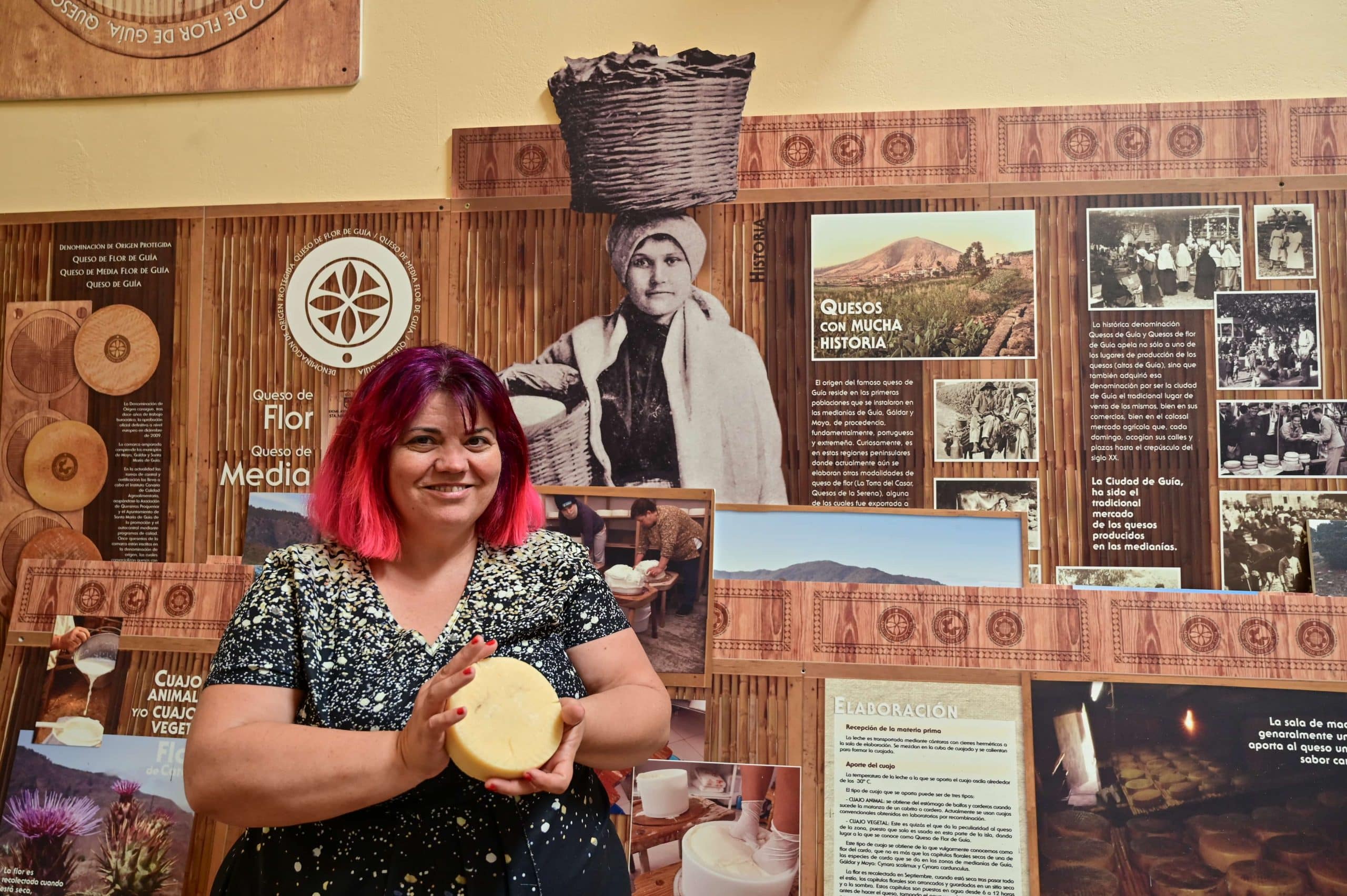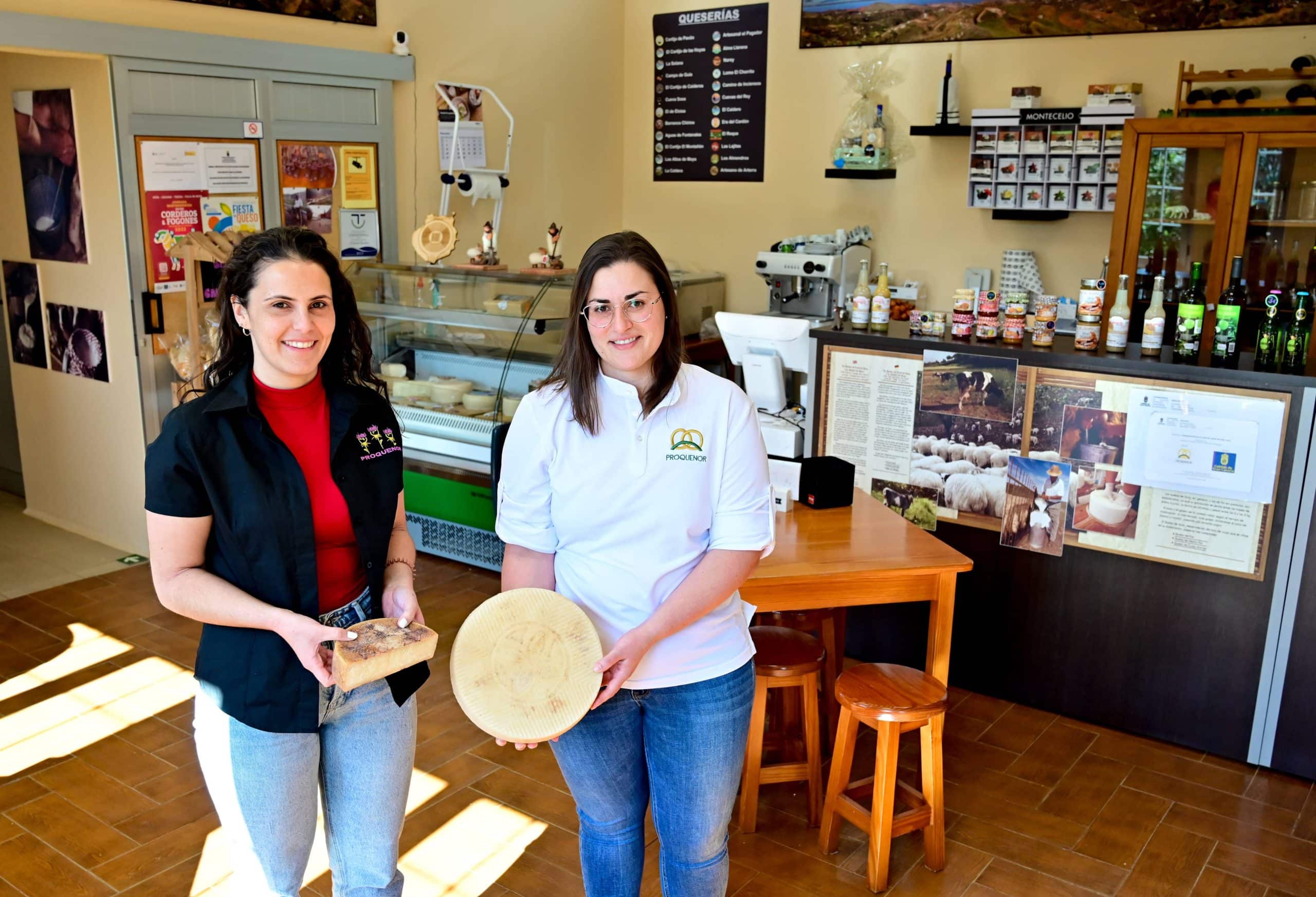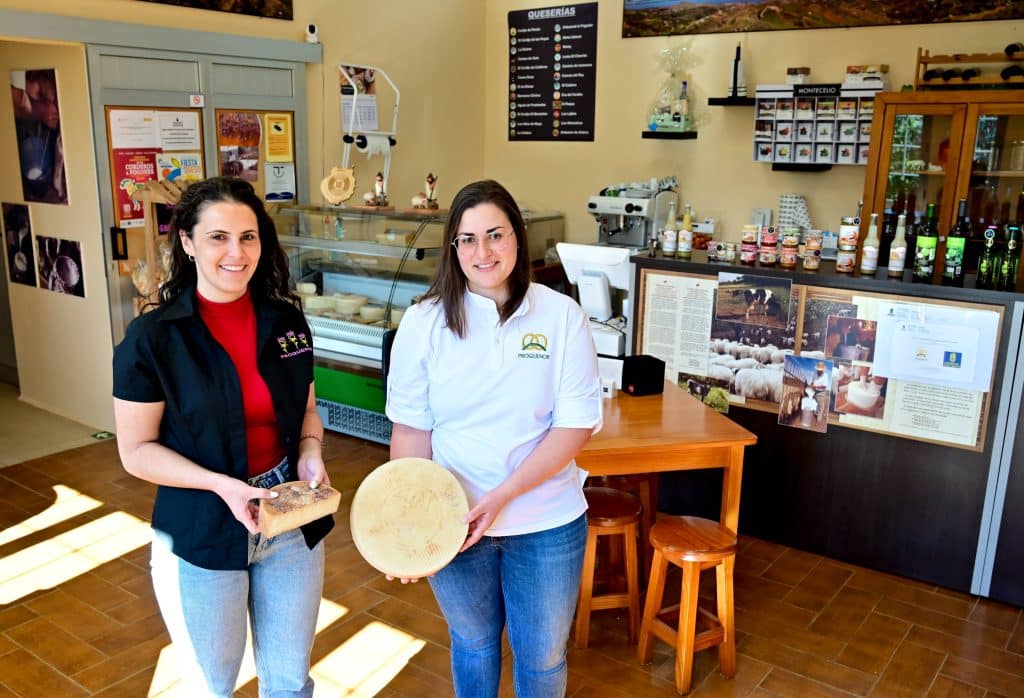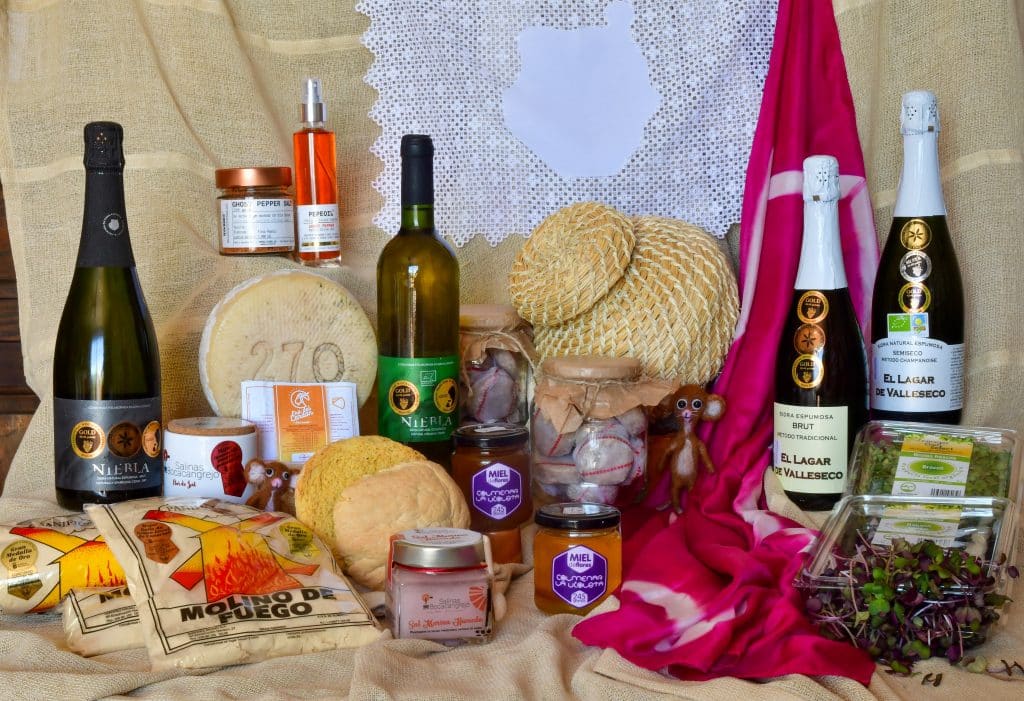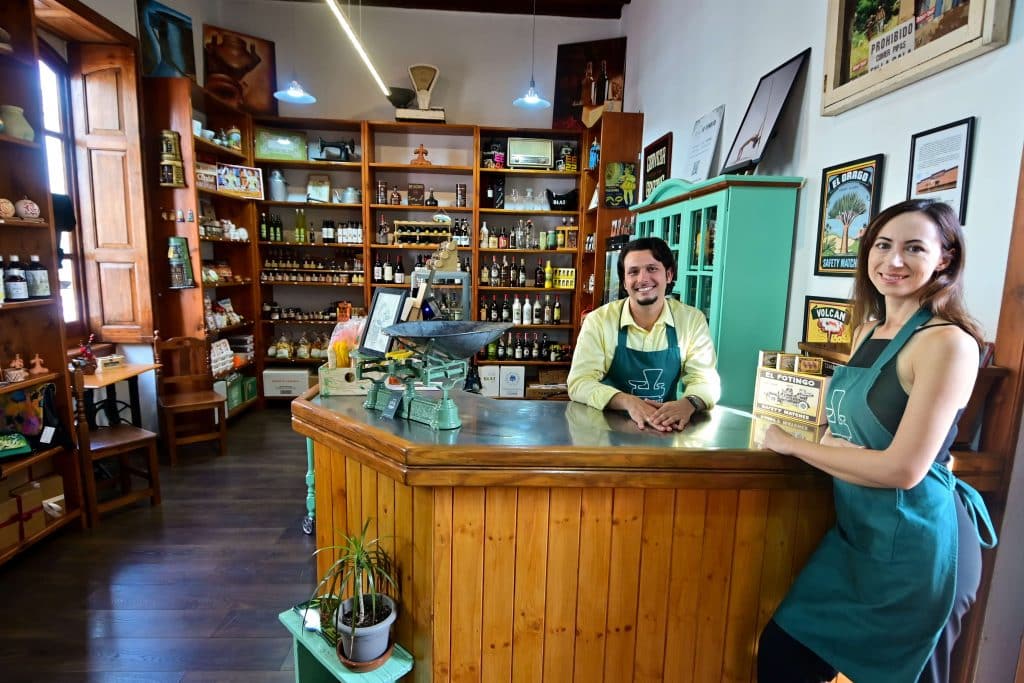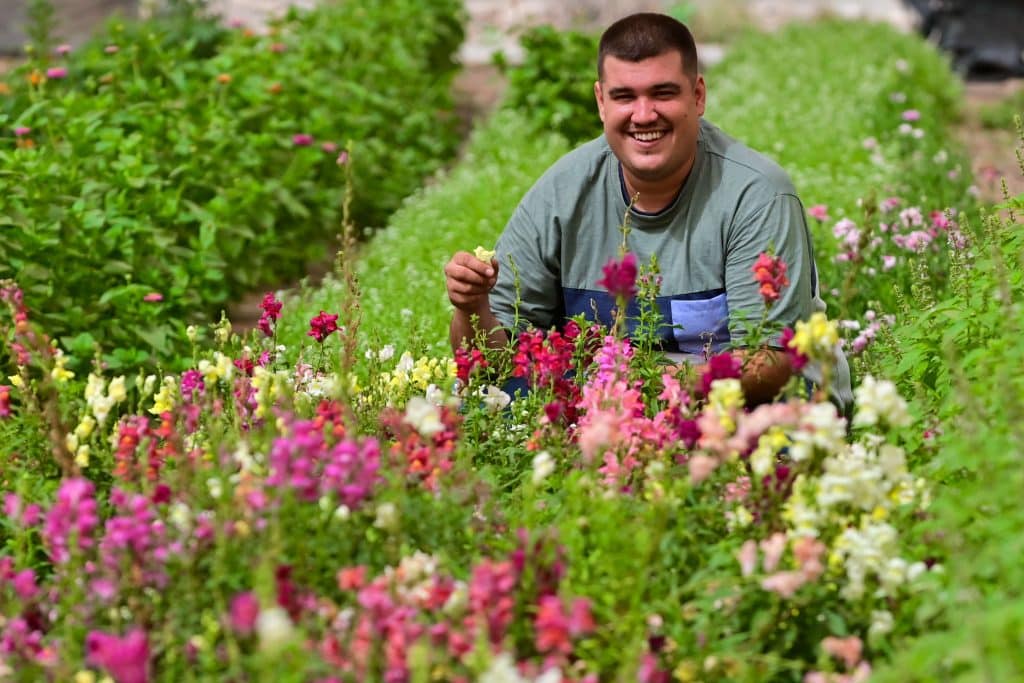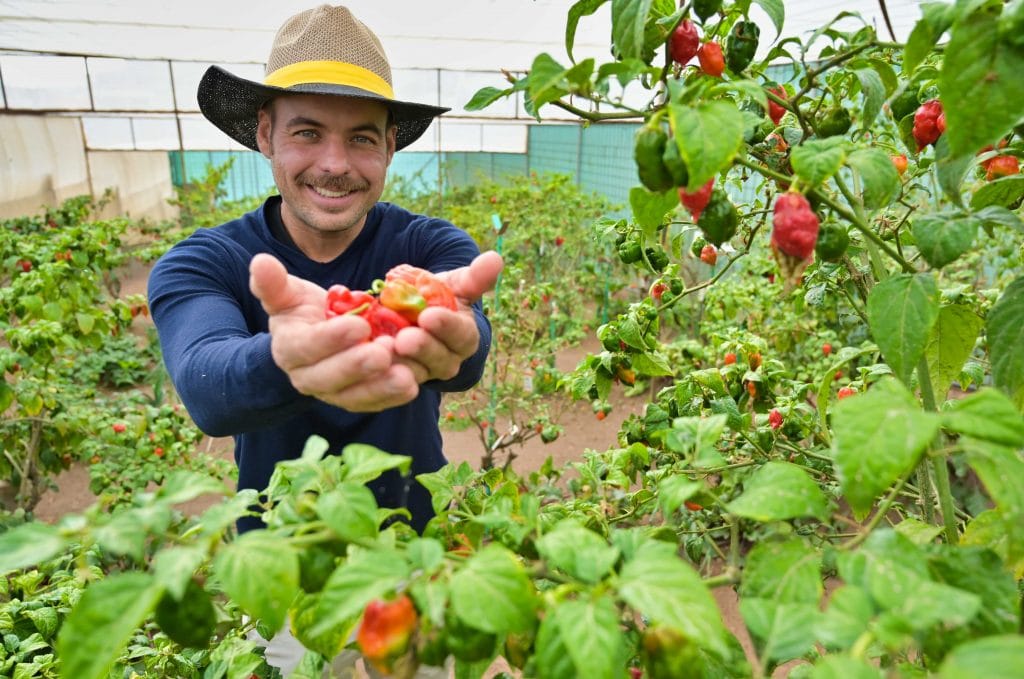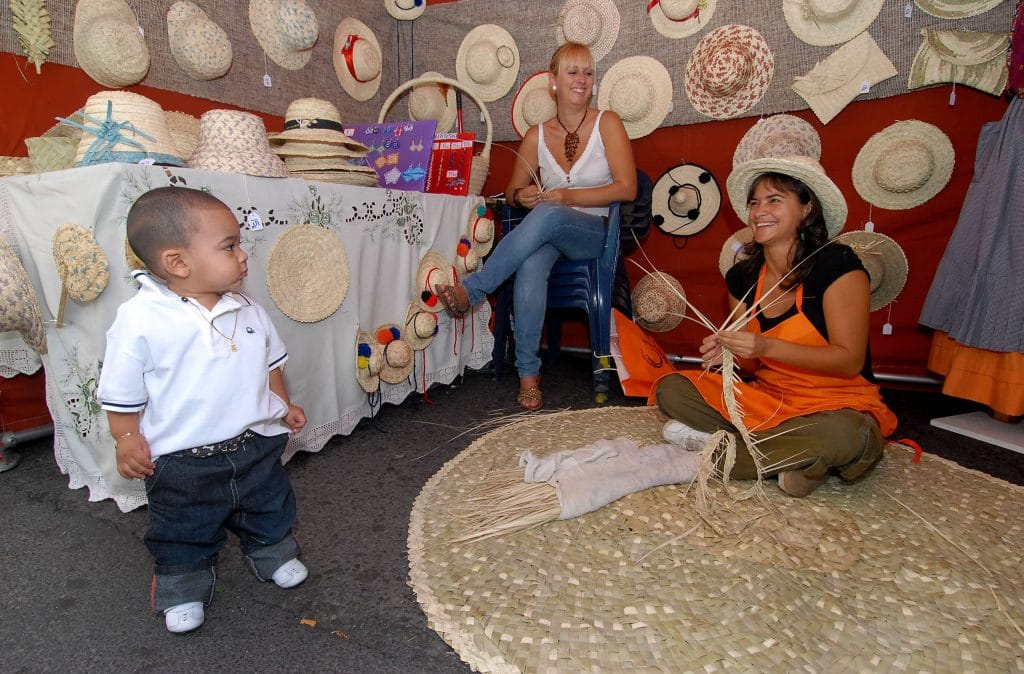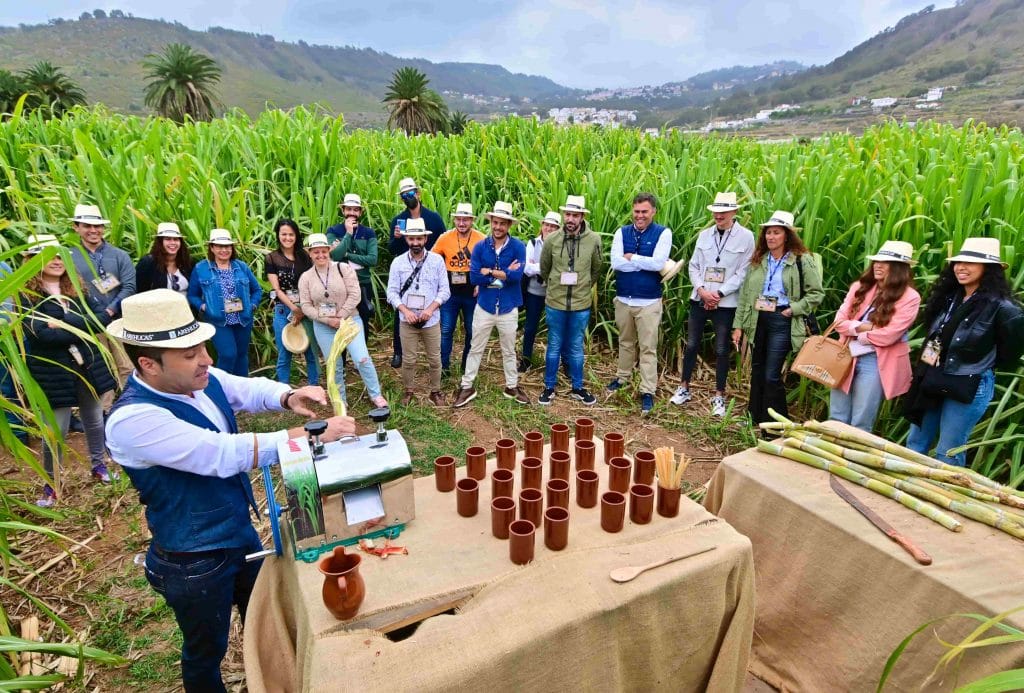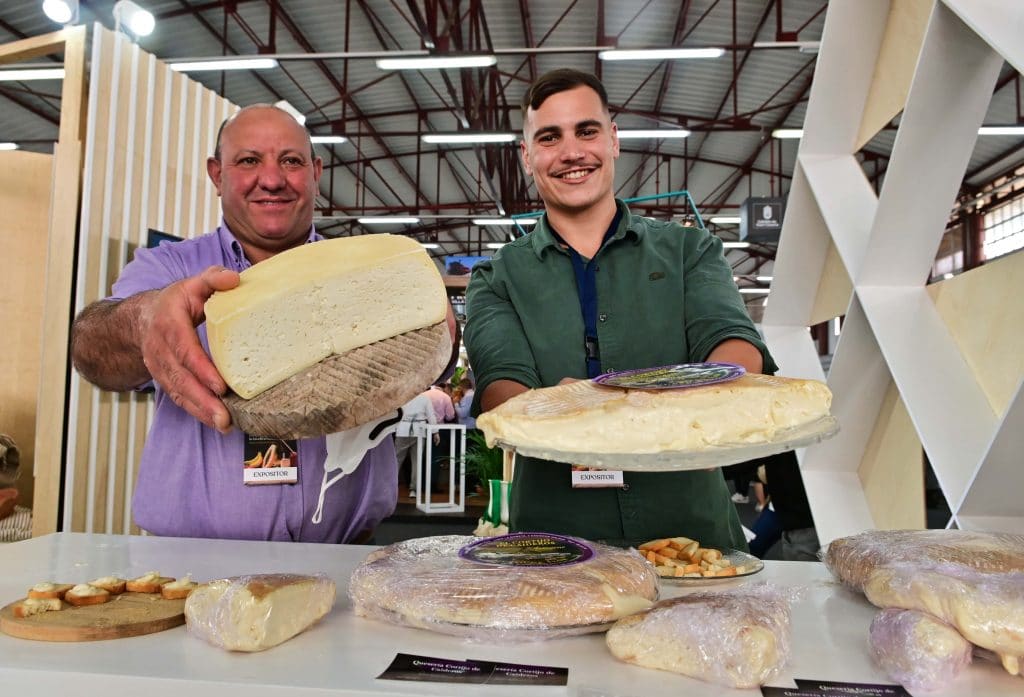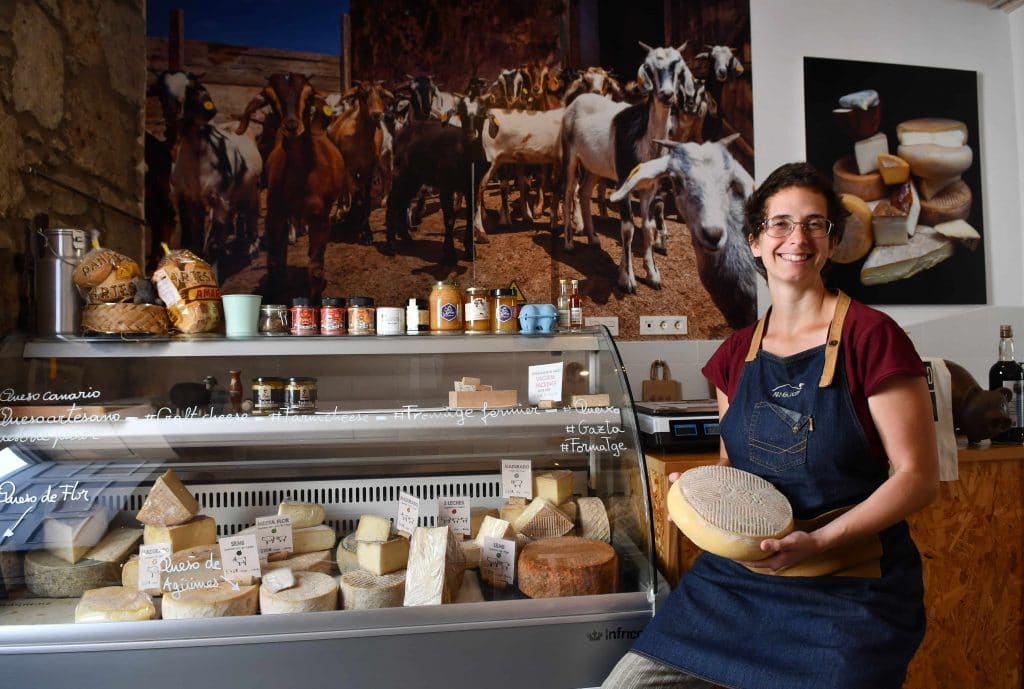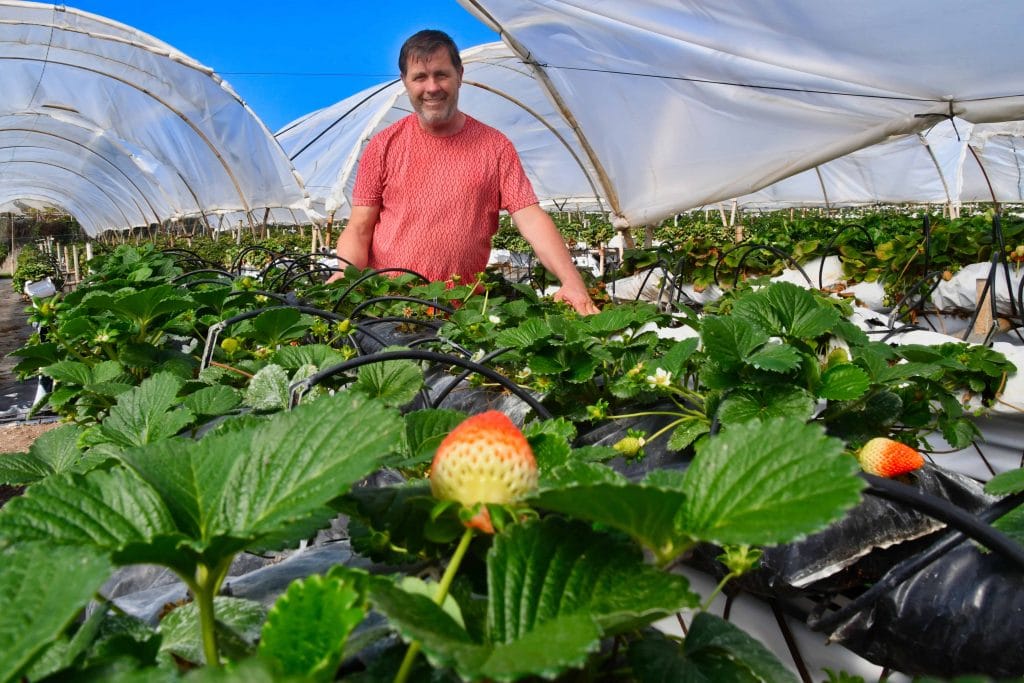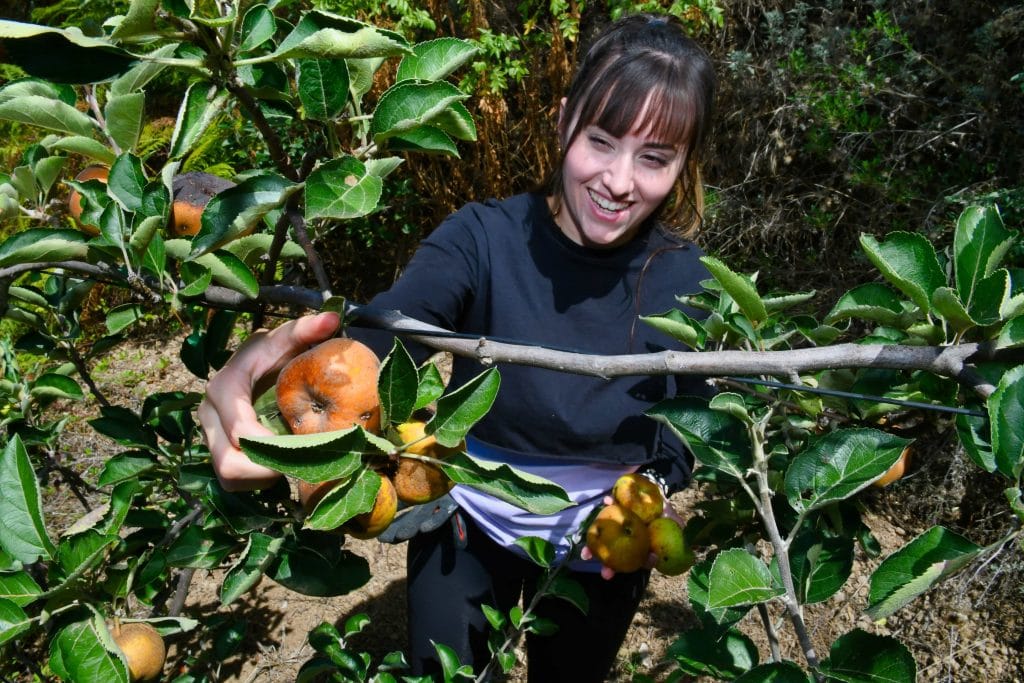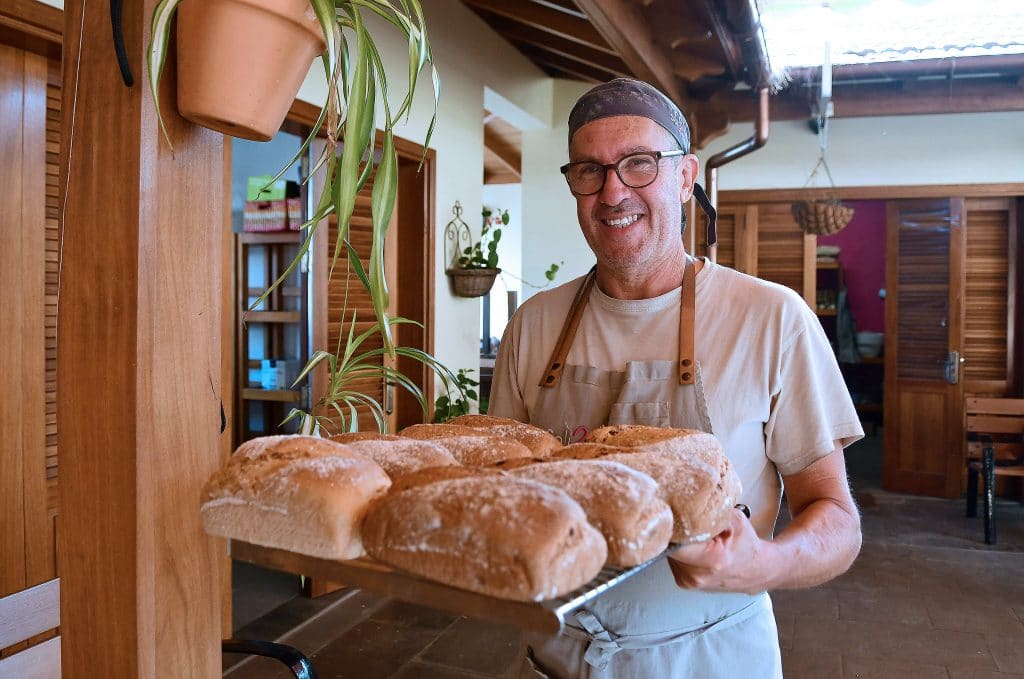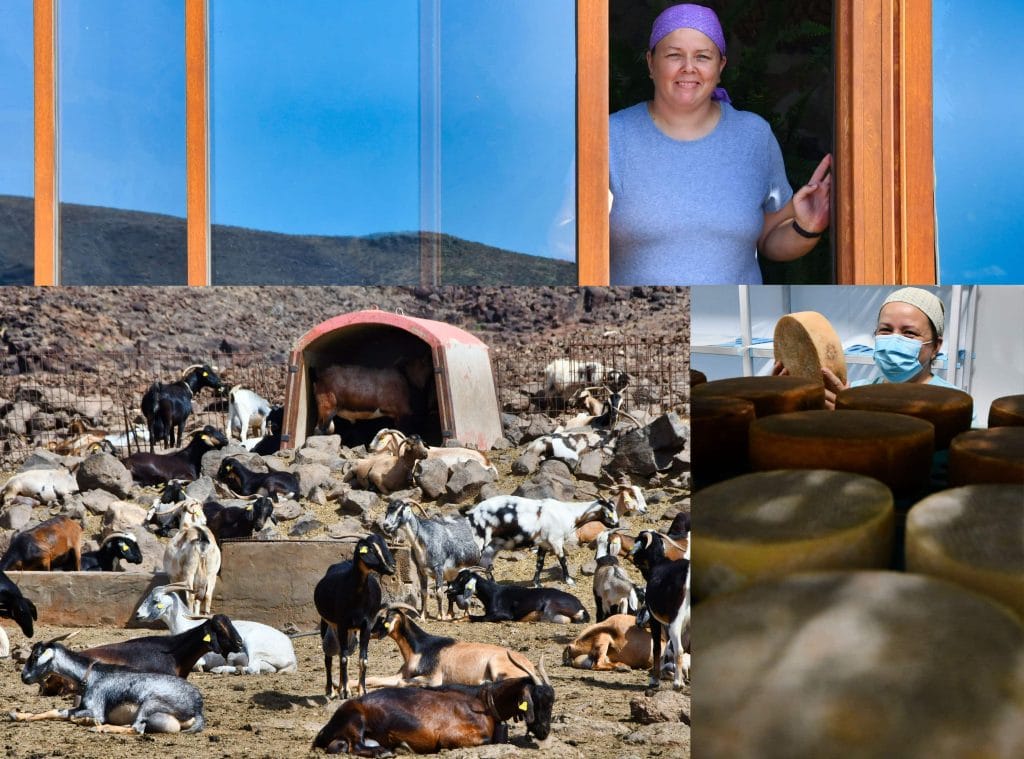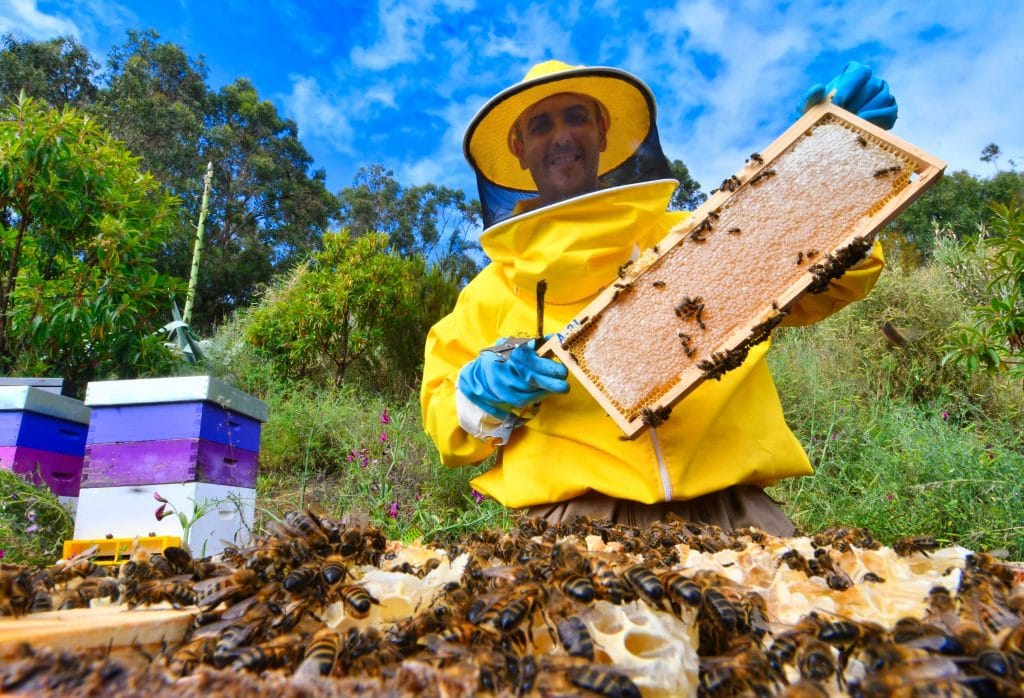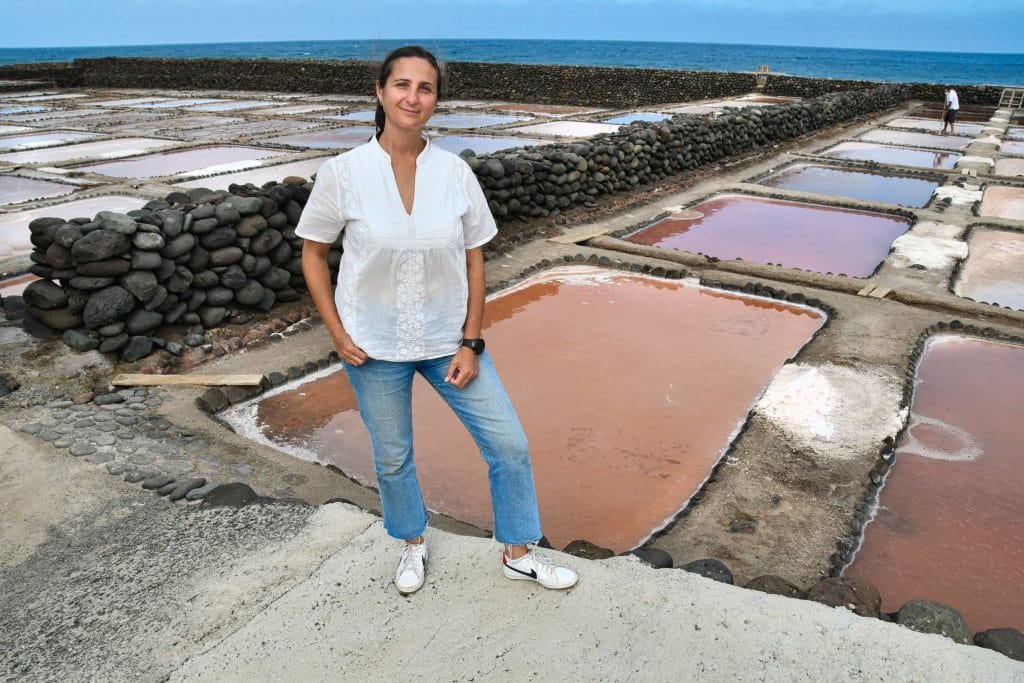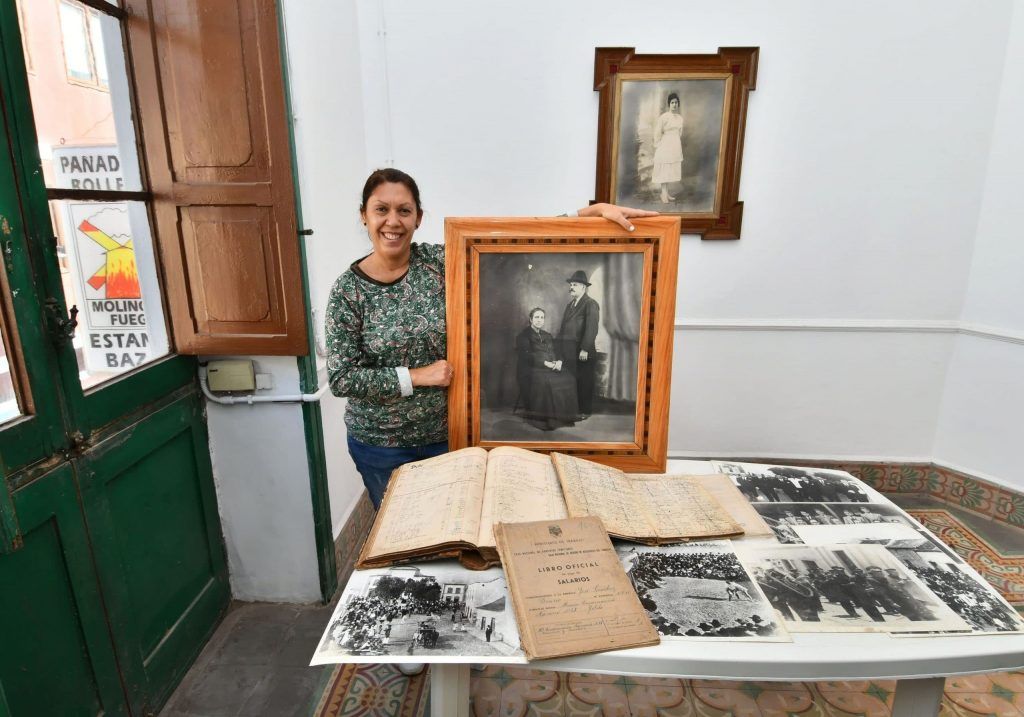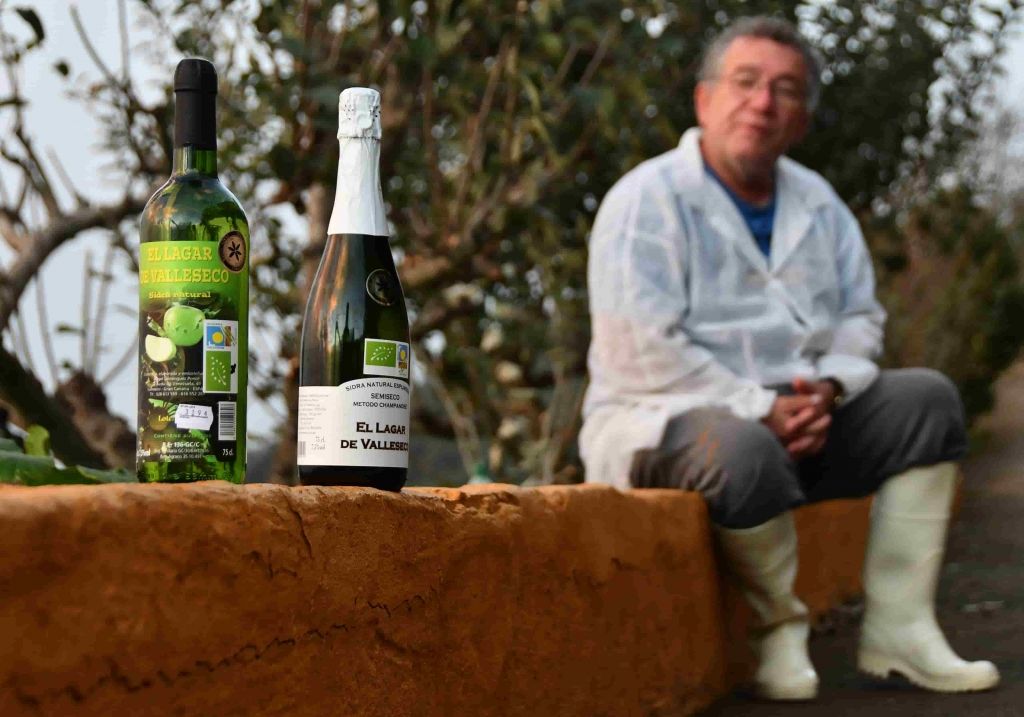Proquenor, livestock and cheese. Written by @loretosocorro
In Montaña Alta (Santa María de Guía) there is a place where respect for one of the star products of Gran Canaria has refuge and embrace: The Cheese House. There we are greeted by Carla Vera Arencibia, who serves the little shop at the entrance, and Isabel García Quintana, who works further inside, in the same property, is preparing everything necessary to hold a cheese workshop.
Isabel García is a veterinarian and the manager of the Casa del Queso.
The facilities belong to the Cabildo of Gran Canaria, transferred to Proquenor, to help promote the product.
What is Proquenor?
We are the association of artisanal cheese producers of the northwest. The association was founded in 1998, with the mission of being able to create the only protected designation of origin (DOP) of Gran Canaria and this was achieved in 2007. Now we strive to support livestock farmers and artisanal cheese producers.
How many producers does the association have?
Around twenty-four cheese factories, spread across several municipalities on the island.
All with PDO?
No, at first there were fifteen cheese factories that could fall within that protected designation of origin and, of those fifteen, only four remain. It is something that is being lost; There is no generational change and at Proquenor we try to maintain it and if possible increase it, at the same time, we strive to help all the cheese factories in the association to market and promote their production.
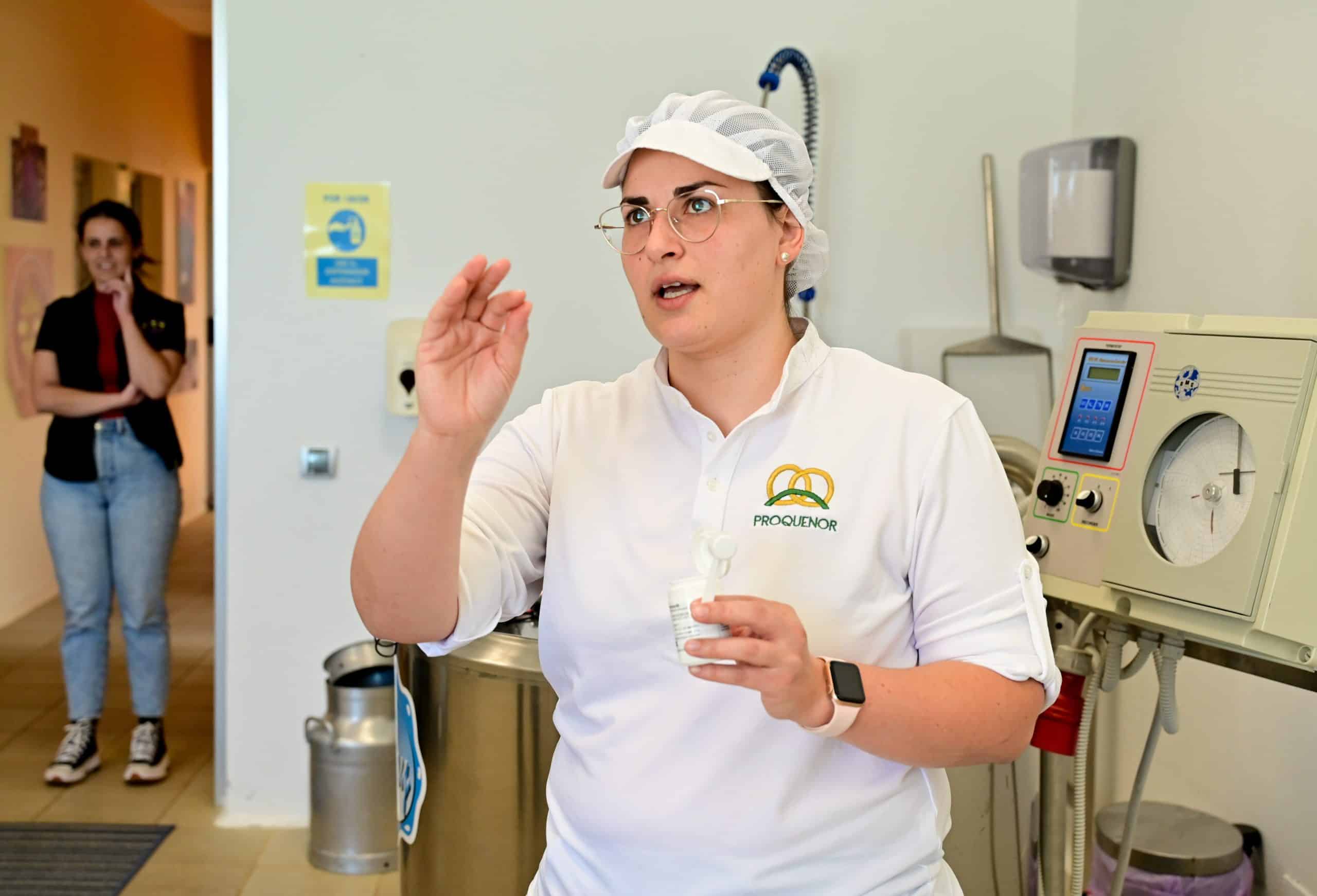
Isabel tells us that they are the headquarters of the DOP whose name is as long as the cheeses they offer us are tasty: Protected Designation of Origin of Queso Flor de Guía/Queso Media Flor de Guía/Queso de Guía. What requirements do cheeses have to have to obtain this DOP?
The cheeses must be made mainly with sheep's milk and made in Gáldar, Guía and Moya.
Is the percentage of sheep's milk to be used established?
Yes, for example: a cheese with the three types of milk would be a minimum of 60% sheep's milk, 30% cow's milk and a maximum of 10% goat's milk. Goat milk has a stronger flavor and counteracts that of the other two.
Why only those three municipalities for the DOP?
In these places there is a fauna and flora that is different from that of other municipalities and this provides those nuances that are later noticed in the milk and in the final product, in the cheese.
On one of the walls of the store there is a large image with the different labels that the cheeses carry, apart from that of their cheese factory, and that certify that they are within the DOP.
The difference between the three denominations -Isabel adds. It's in the mix. If you add thistle flower it would be Qbone Ftheir, but if it becomes animal rennet it would be Quse of Guía, and if half of thistle flower rennet and half of animal rennet are added, the Quse of Media Ftheir. The seal of each piece has different drawings: flower; half flower, half half wedge of cheese; and only the drawing of the old cheese factory, respectively. The colors of the labels are also different.
How is that vegetable rennet made?
Livestock farmers usually go to look for the thistle flower in the municipality of Tejeda, which is where the plant grows, and they do so at the end of July, beginning of August. They take the flower, let it dry and, once dry, collect the pistils - which is the lilac part of the plant - and crush them. Thus, crushed, it is left in a bowl with water for twenty-four hours and then strained. That is what is added to milk to curdle it.
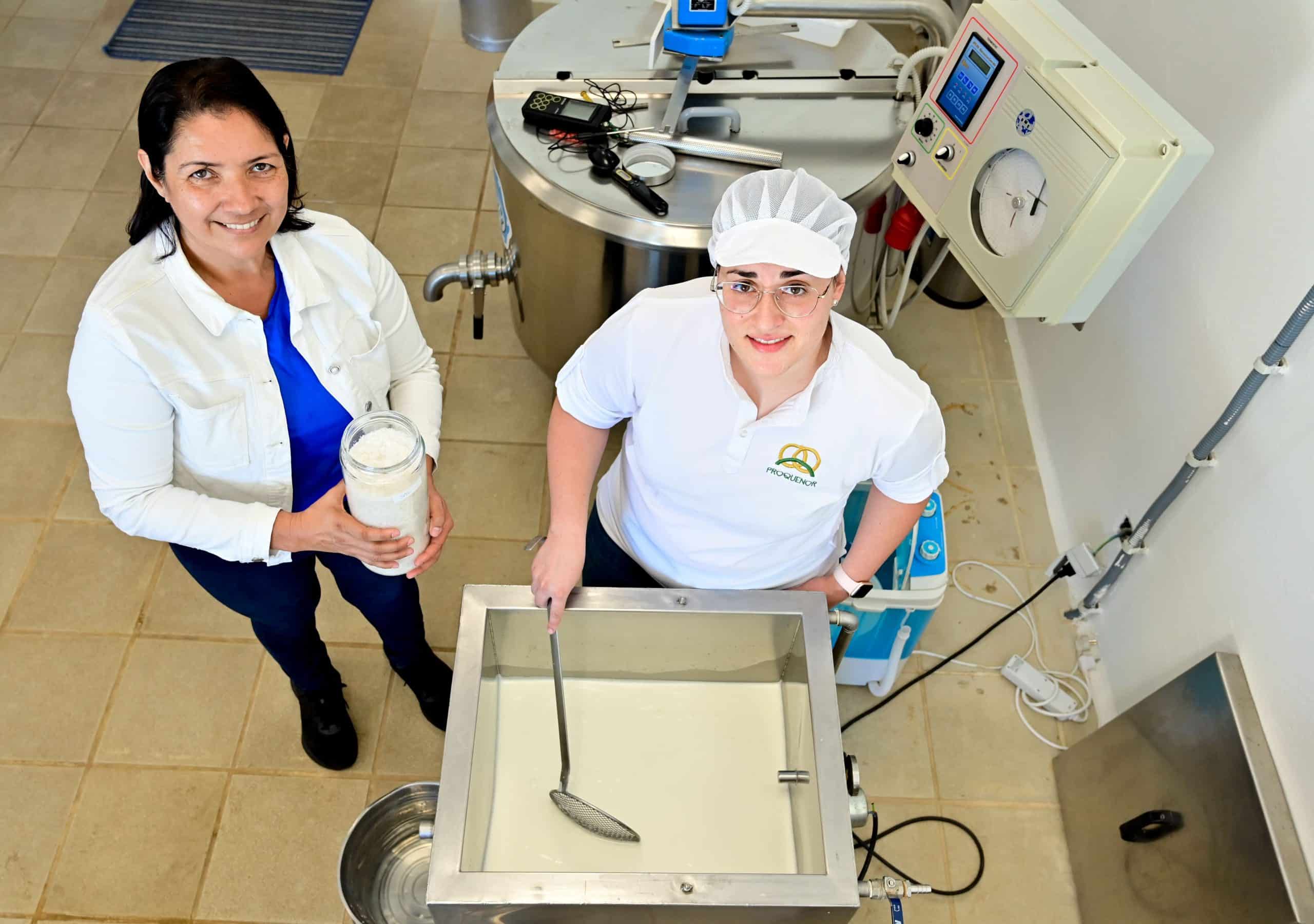
Why is the DOP linked to Guía if there are other municipalities that are also producers?
Although the name includes, apart from Guía, Gáldar and Moya, this name was decided because it was in Guía where the cheese fairs were always held and the cheese factories from the three municipalities came to sell the cheeses to Guía.
The ICA (Canary Institute of Agri-Food Quality) supervises that the products meet the quality requirements of the DOP and, in addition to those already mentioned, the cheese is encouraged to be made during the period of months from January to June.
If there is a cheese factory -Isabel speaks that divides the livestock in two, that is to say: it separates the sheep and covers them in different seasons, to have milk all year round and make cheese outside of those months; Those cheeses that are made out of date do not fall within the designation of origin.
García Quintana also tells us about the importance of the transhumance that these ranchers do and its influence on the final result.
The sheep are moved from where there is no pasture left to another municipality. For example: the sheep from Cortijo de Pavón, which are usually in Guía at the end of the year, when they finish giving birth, move to Tejeda. We take advantage of these dates, close to Christmas, to promote another livestock product and that is lamb meat. That's why we have the initiative Between Corder yourselves and Fogons; Thus, farmers can remove the lambs from the cattle and have milk again, to make cheese again. Well, the sheep go up to Tejeda after giving birth and stay there until April, when they return to Guía and, in June, they are taken to Tejeda again to remain in that municipality until the end of September, which is when they are returned to Tejeda. bring home, before calving season.
It's time to start today's workshop. Luisana is the name of one of the people who has moved to the Cheese House to learn how to make cheese. While Isabel is weighing the salt that she then adds to the warm milk, inside the curdling vat she tells us why she came to do the workshop.
How I like to eat cheese! -Luisana says with a big smile and sparks of excitement in her eyes. Now I am studying restoration and I love making cheesecake; Well, that's why I decided to come.
Isabel is the daughter of ranchers and, since her great-grandparents, her family is still making cheese in Fontanales. She remembers that her grandmother had a cheese factory where she gets off to Valsendero.
My grandmother's cheese factory was called Views of Barranco de la Virgen, because it was there, at the top, in a beautiful area that has very beautiful views of the Barranco de la Virgen. My parents' cheese factory is in La Solana.
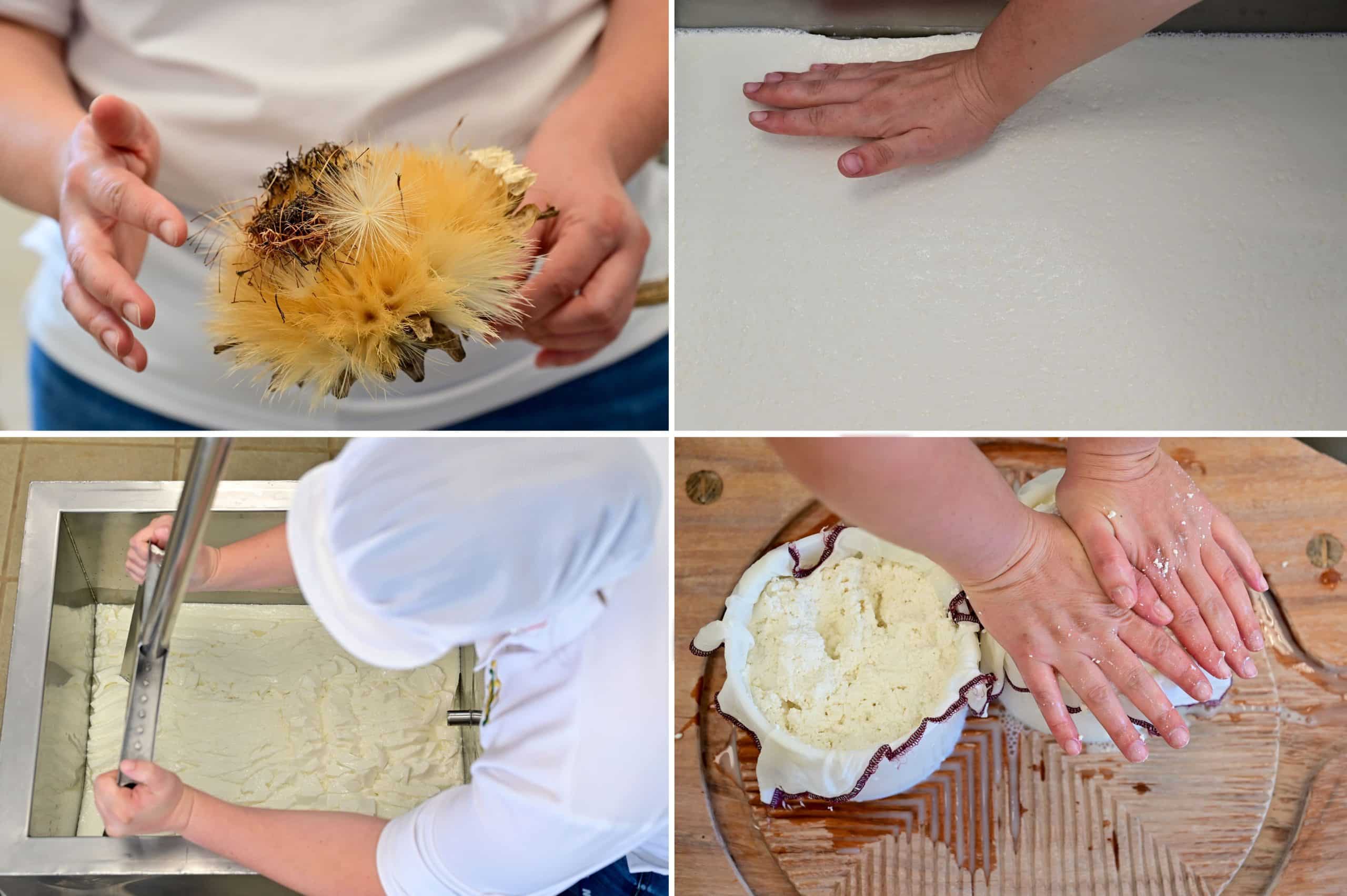
The lesson begins and we see how Isabel measures the temperature of the milk, to then add the ferment and the rennet, which in this case is animal rennet, although in some other workshops thistle flower rennet has also been used.
When it is flower cheese, the farmers tell me that it is not necessary to add the ferment because the rennet is already natural. animal rennet -Isabel continues explaining. In the past, it was taken from the fourth stomach of lambs and baifos, which is called curdling or abomasum, where the milk ferments inside it and they say that it was saved after slaughtering the animal to use that rennet when they were going to make cheese. Rennet is currently available synthetically.
This milk that is used today for the workshop is not sold here, how do they get it?
This was supplied to us by the Cortijo de Pavón and is made from sheep, the previous time we did the workshop with cow's milk that they brought us from the Caidero cheese factory. About ten liters of sheep's milk are used for cheese. Apart from teaching how to make cheese, we also plan to do butter, yogurt and cream workshops soon. Now -indicates Isabel- You have to wait an hour for the milk to curdle.
We take the opportunity to learn more about the daily work at the Cheese House and return to the little shop, with the interior door closed to drown out the noise of the construction in the basement. There, in the lower part of the building, they have an area decorated with figures of sheep and various objects (photocall), symbolic posters and other images. Next to it there is another room with a cold room that is being adapted for flower cheeses. The works include a new chamber to mature cheeses.
We are in contact with producers daily. -Carla and Isabel relate , with those who supply us with the product to supply us with cheese and we try to have variety, for sale to the public and then, as Casa del Queso, we are also in contact with educational centers and we notify schools so that they come and we can give them a demonstration . This is how we make known the Casa del Queso and everything that this project entails.
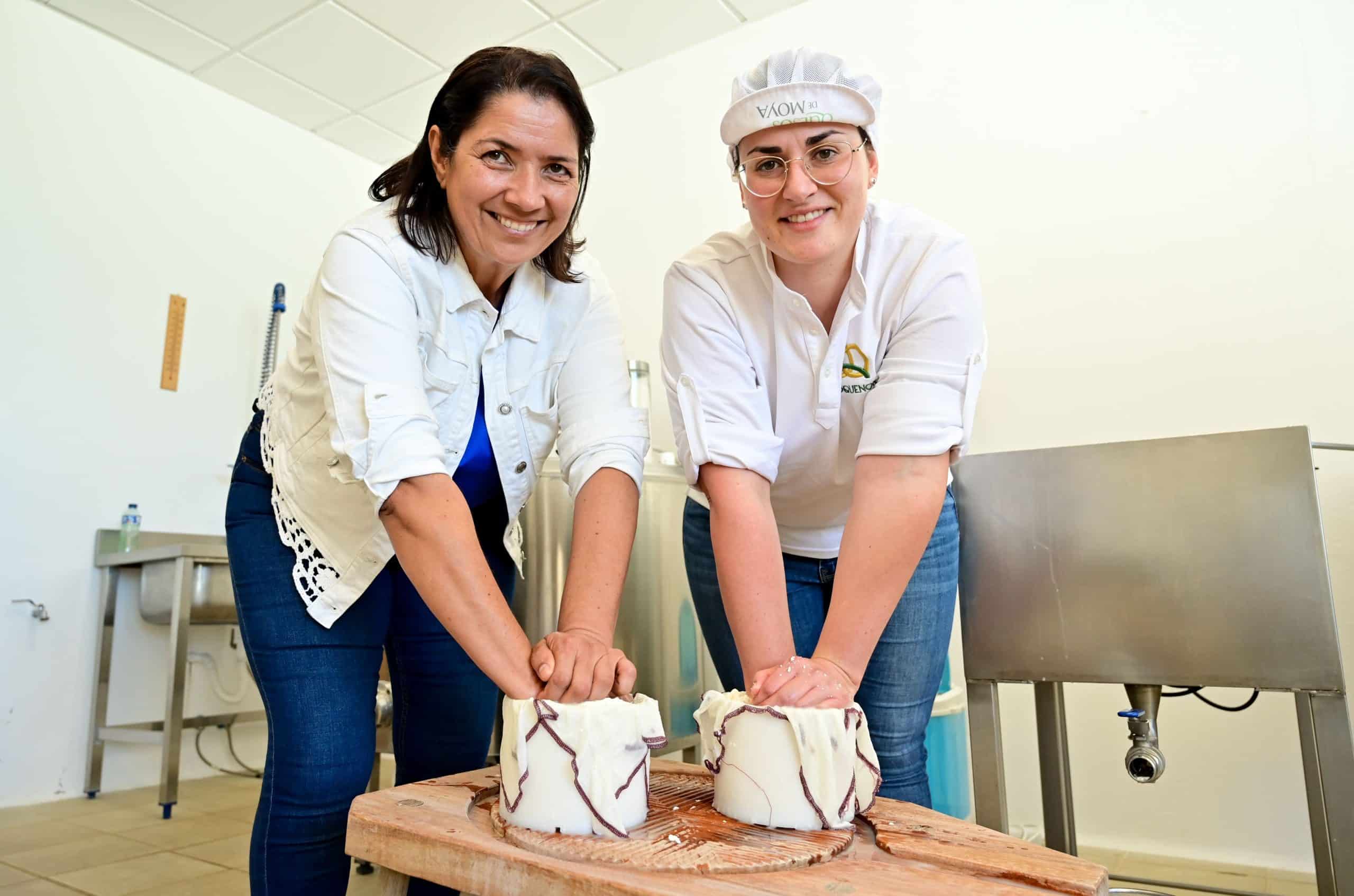
Time flies, the noises stop for a moment and we return to the work of making an artisanal cheese. Among the machinery that is exposed and marked we see a cold tank…
The farmers milk and make the cheese as they go. They don't wait more than two hours. If one day it is not possible, the cold tank is removed and the period is increased for another forty-eight hours. And after that time, the milk would have to be put in the pasteurizing vat.
Isabel checks if the milk is curdled by rocking the container slightly and pressing on the edges, to see if the milk separates a little from the vat where the white gold of our pastures is tempered. With the lyre, like a mother combing her child's hair on the first day of school, Isabel delicately cuts the curd.
It has to be as small as possible. The wires of the lyre cut again and again, transforming the curd and thus we obtain, on the one hand, the whey and, on the other, these solid pieces that will be the future cheese.
When finished, the two elements are separated and the liquid is poured into buckets. The solid part ends up in plastic molds that have already been lined with a cloth cloth. Now all that remains is to press with your hands inside the mold and on the cheese maker, until there is no whey left.
The sound of the tabefe that falls with constant pressure brings back memories of the long and firm hands of maye, my grandmother, patiently dressed, sitting on a stool, with her handkerchief tied tightly and the cheese plate at her feet. That music of the serum like a waterfall over the aluminum bucket in the silence of the cave house and, now here, it is pure harmony. But we can't relax too much. After pressing, turning the cheese and pressing again on the other side, we can already see the result: a beautiful artisanal cheese.
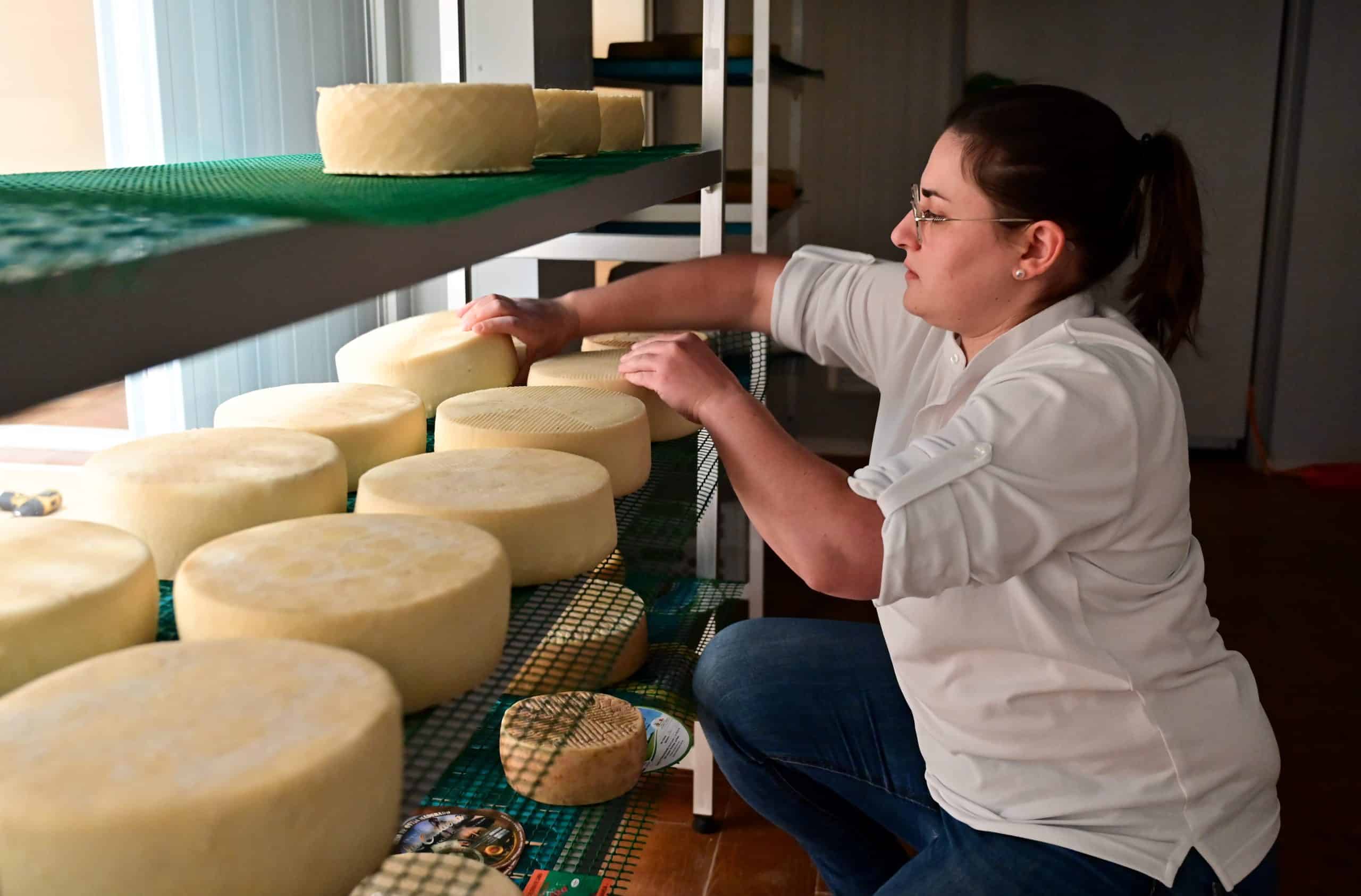
Isabel, what was the first cheese you made?
At home, since I was little I was already making cheese.
What is your favorite?
I like them all.
Someone points out “Anyone that is round…” It seems that this phrase has raised the curiosity of the participants and opens up another topic of interest: why are cheeses round?
For convenience, the most comfortable molds to make are the round ones, the ones that close on themselves... the first molds were made of wood. -Isabel says. and that was something unhygienic. Then they became metallic and some made of plant fibers. They were all made in that way. The circle is perfect to work with.
After the workshop and looking at the samples and photos in the shop, we asked Isabel how to distinguish the different flower and half-flower cheeses, without seeing the labels...
The texture of the flower cheese is creamy, it can be eaten with a spoon and it is soft on the palate but in the end it leaves a bitter tone and that is due to the thistle. The half-flower cheese is not as creamy and leaves less bitterness. In terms of texture, it is similar, at first glance, to that of animal rennet cheese, but when you go to break it, it always sticks to the knife. It is slightly creamy.
Our mouths are watering and we still have to wait for the flower cheeses to be sold again. We like to feel the joy of someone who makes artisanal cheese for the first time and all thanks to the interest that Proquenor puts into preserving and disseminating it.
With the result in hand, all that remains is decide whether to cure it for a few weeks or put the tooth in now. Whatever the case, the cheese will always be good because our countryside and the ranchers who are responsible for providing us with these delicacies which they are from himas best in the world, as endorsed by innumerable Awards to the cheeses of Gran Canaria.
